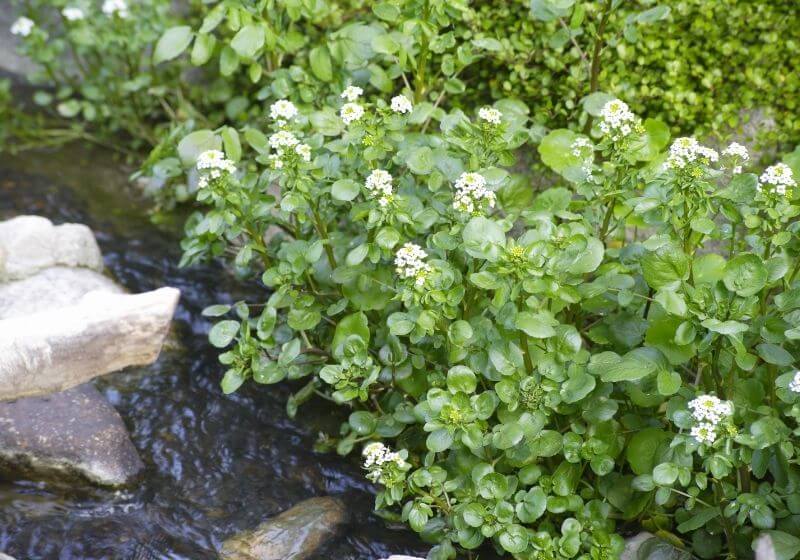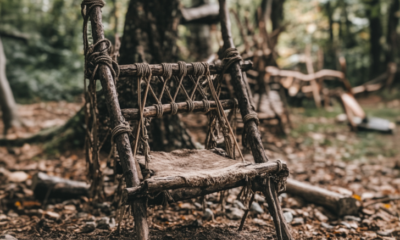Foraging
Winter Foraging | Guide to Foraging Winter Survival Food

Surviving winter can be challenging, but with informed winter foraging tips, it's possible to make it through the freezing weather in one piece.
Learn how and where to find stock and how to prepare in this ultimate winter foraging guide.
RELATED: How To Melt Snow For Survival | 5 Ways
13 Top Food Sources When Winter Foraging for Survival
Hunting

Hunting guarantees you a constant protein supply during winter, especially if you know the right places to go hunting. However, it is vital to have a suitable crossbow or rifle to take down a deer or an elk.
As far as trapping goes, raccoons, rabbits, and beavers are your best bet at landing a meal. Take advantage of their naturally sneaky and greedy behavior to lure them into traps and be keen to cook the meat all through to kill parasites and bacteria.
Tip: Never eat random dead animals that you come across.
Acorns, Horse Chestnuts, and Black Walnuts

You can readily find acorns on the ground, but you will need to lightly dig in the snow where you find their trees to reveal them. In some cases, the acorns may also be under dead grass or fallen leaves hence the need to search before giving up.
If you decide to forage these nuts, you can roast or boil them after the three-day soak, or you can dry and grind them into flour.
Tip: It is vital to soak acorns for three days, changing the water in between to remove tannins. In case of water shortage, skip these are they might not be worth the water wastage in the long run.
Berries

Berries have antioxidant properties and make excellent winter foods. Head into the forests in the middle of December and January, and you might be lucky to find the last berries on salal shrubs and black huckleberries. You will be amazed at how well the freezing weather preserves these.
Reminder: Don't eat berries you haven't had before as they could make you sick.
Pine Nuts

Pine nuts are readily available in most areas and are a great way to stay energized throughout winter. Your best chance at finding pine nuts is from the closed cones on the trees. Any that have fallen are likely to have already been scavenged by animals, but you could still get lucky.
Crabapples

Though not the tastiest fruit, crabapples are hardy in cold weather and pack a ton of nutrients. While you will mostly find them hanging in their trees, you can still eat any that you find fallen.
However, ensure you examine them for any signs of being eaten by vermin or decay – avoid eating crabapples with insects in general as it you risk infection.
Mushrooms

While mushrooms are some of the most common and nutritious things you will see around in winter, consuming the wrong kind can be fatal. So, unless you are sure about particular mushrooms, it is safe to skip them.
Though there is a wide range of mushrooms that do well in winter, the specific varieties will depend on where you are. To ensure you do not consume poisonous ones, familiarize yourself with the types of edible mushrooms that grow in the wild.
Tip: You can easily spot mushrooms on growing trees or rotting vegetation, especially logs.
Milkweed Seeds

The milkweed is the ultimate winter foraging plant. Besides being a great source of healthy seeds that you can comfortably eat raw, the fluff provides excellent insulation for shelters, clothing, and sleeping bags.
The fluff and dried milkweed pods also make the perfect tinder for when you want to start a fire.
Watercress

While the large and dense watercress clusters are more prevalent in spring, it grows all year-round, which increases your chances of success during your winter foraging. Moreover, you can eat it raw, which makes it a handy source of nutrients for winter survival when most heat sources are scarce.
Grubs

You will rarely find these above the ground in the cold weather, but you can pull yourself enough to keep your body nourished with some digging. Besides underground, you can also find them on heavy vegetation or trees and in rotting logs.
If you do not find grubs or bugs, you can try out crickets, ants, and termites as they are also readily available and safe for consumption. Even so, ensure you boil all insects to kill any parasites or bacteria.
Tips
- Steer clear of any brightly colored insects.
- Only eat bugs you can identify.
Cattail Roots

Cattails are like root tubers and should be prepared in the same way you would potatoes. Wash and peel them before thinly slicing them together with other vegetables and a protein to make yourself a hearty stew.
Alternatively, dry and grind them into flour if you're not in immediate need of food and have a way of keeping them dry during winter.
Fresh Water Mussels

You will mostly find these as you forage for cattail roots, and the chances are that where you find one, there're others. Use a small rake to scrape them off the muddy beds, and be sure to wash and scrub them before boiling.
Boil them until the shells open, after which you should cook them a little longer.
Reminder: If you suspect that you got the mussels from a contaminated water source, do not consume them.
Rose Hips

Infuse your winter beverages with these vitamin C packed cherry-like parts of a rose flower or make jelly. Either way, you will benefit from the much-needed vitamin C to keep flu and colds at bay in the freezing weather while benefiting from other rose hips' medicinal properties.
Tip: To get the most from rose hips, consume them when fresh as the levels of natural vitamin C significantly decline during drying and storage.
Wild Greens

These include chickweed, wild onions, wild garlic, and dandelion crowns and roots. The best part of foraging wild greens is that they can't help but flaunt their lush green foliage under the snow or poke through vegetation, making it easier to find them.
Tip: Wash and boil them in salty water or cook as you would any other greens.
Things to Keep in Mind During Winter Foraging
Increase in Caloric Requirements
In average temperatures, our bodies burn a lot of calories to keep us warm. Therefore, you can expect that you will need to burn a lot more calories during winter than you would in average weather conditions. Keep this in mind when winter foraging, as you will likely need more food than you think you do to survive.
Shorter Winter Days
Since daylight hours drastically decrease during winter, lack of proper planning plan for your winter foraging can leave you wandering in the dark in unfamiliar territory and dangerously low temperatures.
Besides foraging on familiar grounds, be keen with your resources, and always plan to avoid been caught up in the cold with no food.
Winter Dampness
Winter is remarkably damp in most regions, which doesn't make the storage of your winter survival stock easy. Therefore, besides gnawers like rodents, you will have to take measures to ensure you keep dampness to a minimum. This will prevent the growth of mold and mildew on your stored food.
Heat is an excellent way to deal with moisture.
Rodents Will Eat Your Stock
As their natural food supply dwindles, rodents can become a nuisance, especially during winter. They will invade your space to steal from your store. Besides stealing your much-needed food supply, rodents will also bring parasites and diseases harmful to humans.
It is paramount to, therefore, actively address their possibility and prepare accordingly.
Watch this video by UK Wildcrafts on my top 6 plants to forage in winter:
Winter foraging for survival is about creative thinking as it is about being practical. To increase your chances of success, take some time today to scout out the most viable spots within walking distance. This way, you will not be going out on a wild goose chase come frost.
Do you have other tips for winter foraging? Let us know in the comment section below!
Up Next:
-

 Paracord Projects11 months ago
Paracord Projects11 months agoParacord Projects | 36 Cool Paracord Ideas For Your Paracord Survival Projects
-

 Paracord Projects1 year ago
Paracord Projects1 year agoHow To Make Paracord Survival Bracelets | DIY Survival Prepping
-

 Medical Care1 year ago
Medical Care1 year ago21 Home Remedies For Toothache Pain Relief
-

 Knife Laws12 months ago
Knife Laws12 months agoAre Switchblades Legal? Knife Laws By State
-

 Do It Yourself1 year ago
Do It Yourself1 year agoSurvival DIY: How To Melt Aluminum Cans For Casting












You must be logged in to post a comment Login